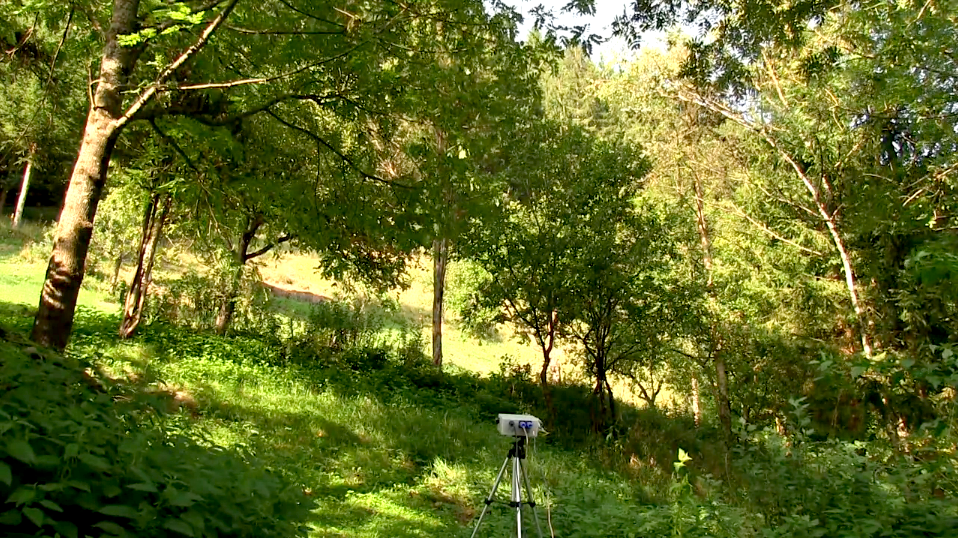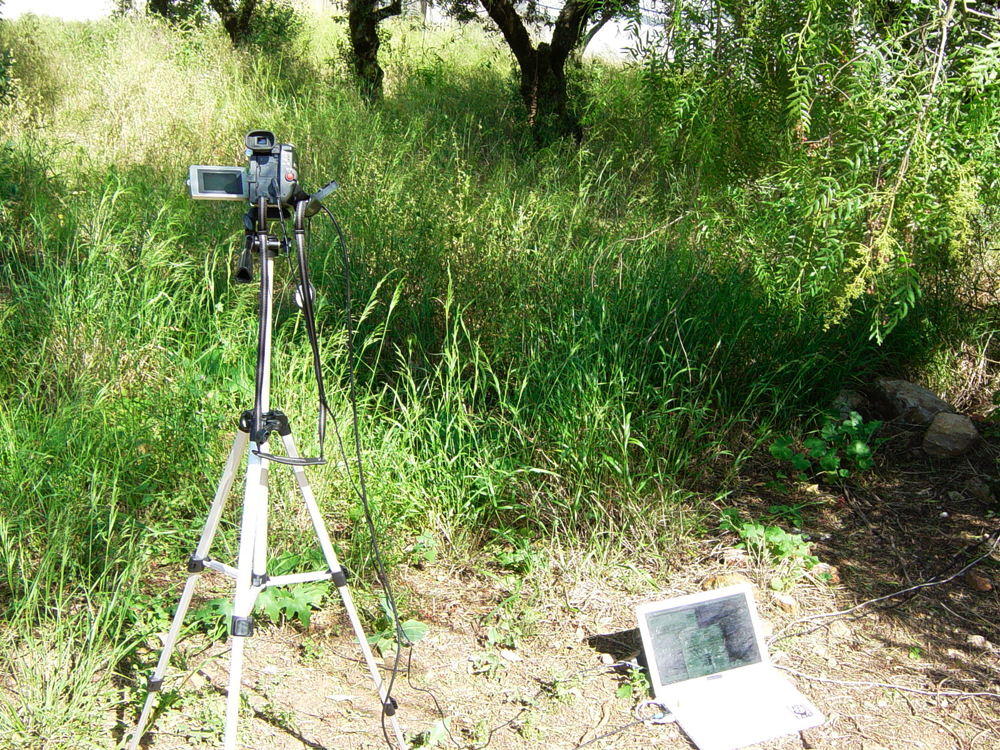
Wind, 2008-2011 by Damian Stewart_
"Each presentation of Wind takes the form of a temporary intervention, constructed around a site-specific visual environment of objects that are moving in the wind, such as a tree or a field of tall grass. A video camera records images of this visual environment. The images are directed through a digital processing system that extracts fields of motion and mathematically transforms these into fields of sound. The fields of sound are in turn reproduced through loudspeakers placed within the original environment.
"Each presentation of Wind takes the form of a temporary intervention, constructed around a site-specific visual environment of objects that are moving in the wind, such as a tree or a field of tall grass. A video camera records images of this visual environment. The images are directed through a digital processing system that extracts fields of motion and mathematically transforms these into fields of sound. The fields of sound are in turn reproduced through loudspeakers placed within the original environment.
Heard and seen together, the sound fields and visual environment form a tight cybernetic feedback loop. The sound fields guide and enhance the viewer’s visual experience, focusing their visual attention toward particular kinds of visual motion. This strengthened visual experience guides and enhances the viewer’s sonic experience, focusing their sonic attention toward particular kinds of sonic motion. This feedback loop creates a strong interconnection between the visual and the sonic within the mind of the viewer, leading to momentary states of complete attention to the different senses, and an overall heightened awareness of the beauty that is present." - Damian Stewart. See more;
Wind: sound from motion (2008-2011)



Wind at aDA Symposium 06/2009


Wind at O Espaço do Tempo, Montemor-o-Novo, Portugal, 2008


Technical details
"The input from the camera (1) feeds into the computer vision processing system (2), which finds motion and converts it into a format useful for sound synthesis (3). In the existing prototype, the camera (1) is an external digital video camera that sends data to a laptop computer running software which handles (2) and (3). Sound signals produced from (3) are amplifier and dispersed using loudspeakers (4).These components are all housed in a portable enclosure and powered by a 12V rechargeable battery, allowing for exhibition in practically any environment or location."
Made with openFrameworks and Pure Data, with production completed during a New Interfaces for Performance residency.
Made with openFrameworks and Pure Data, with production completed during a New Interfaces for Performance residency.
